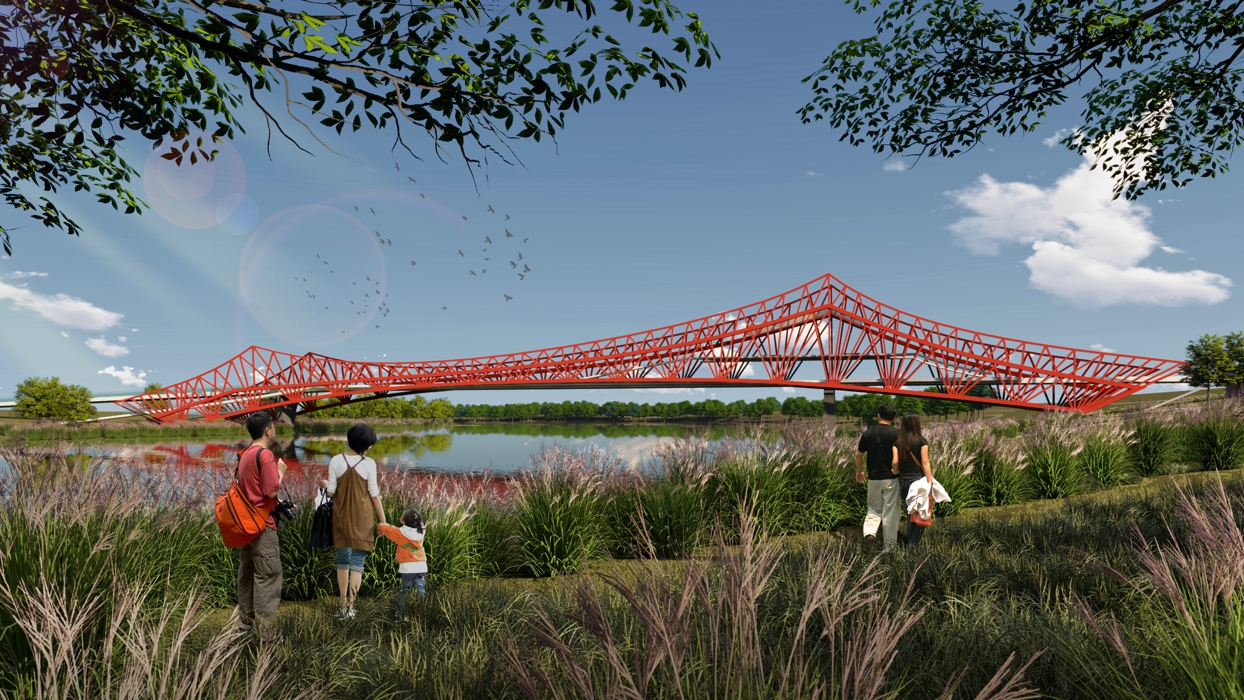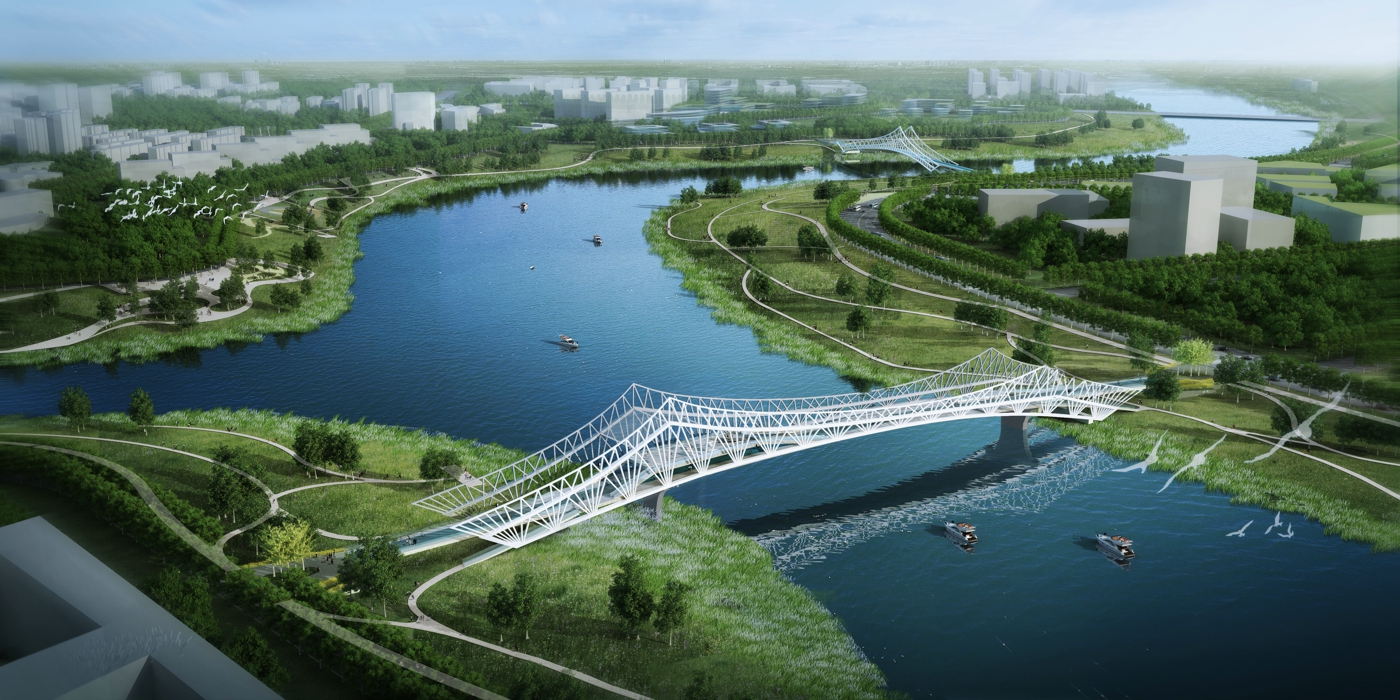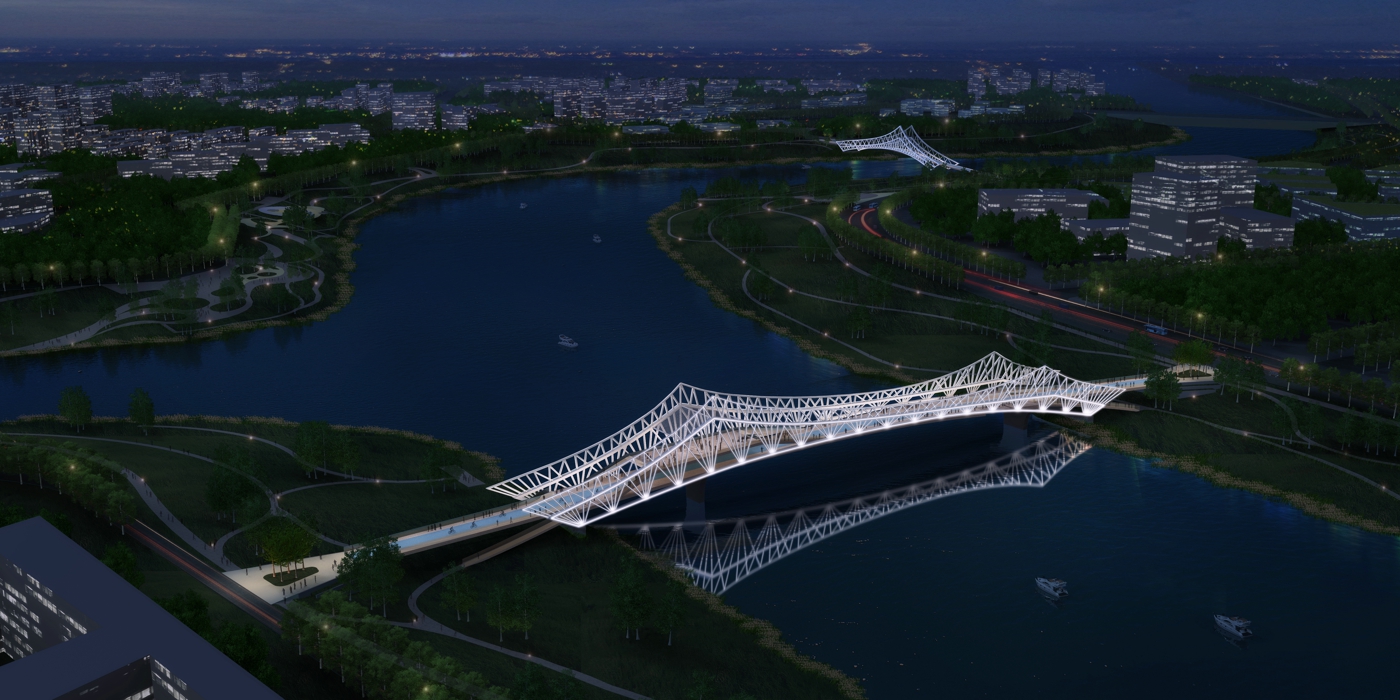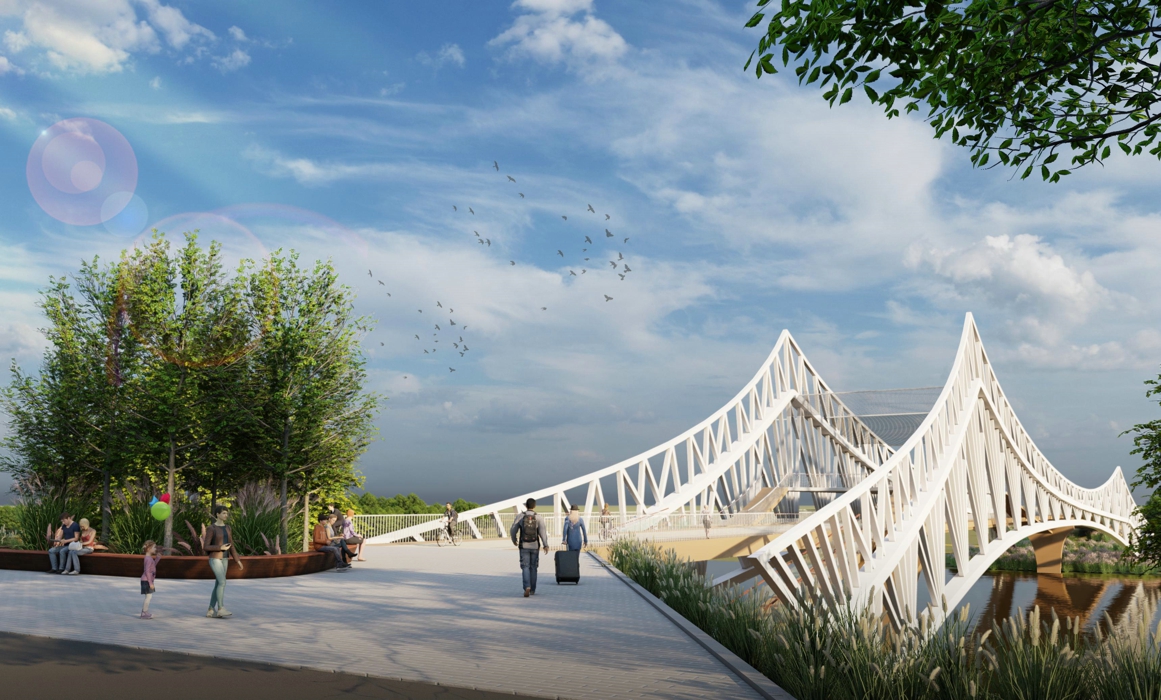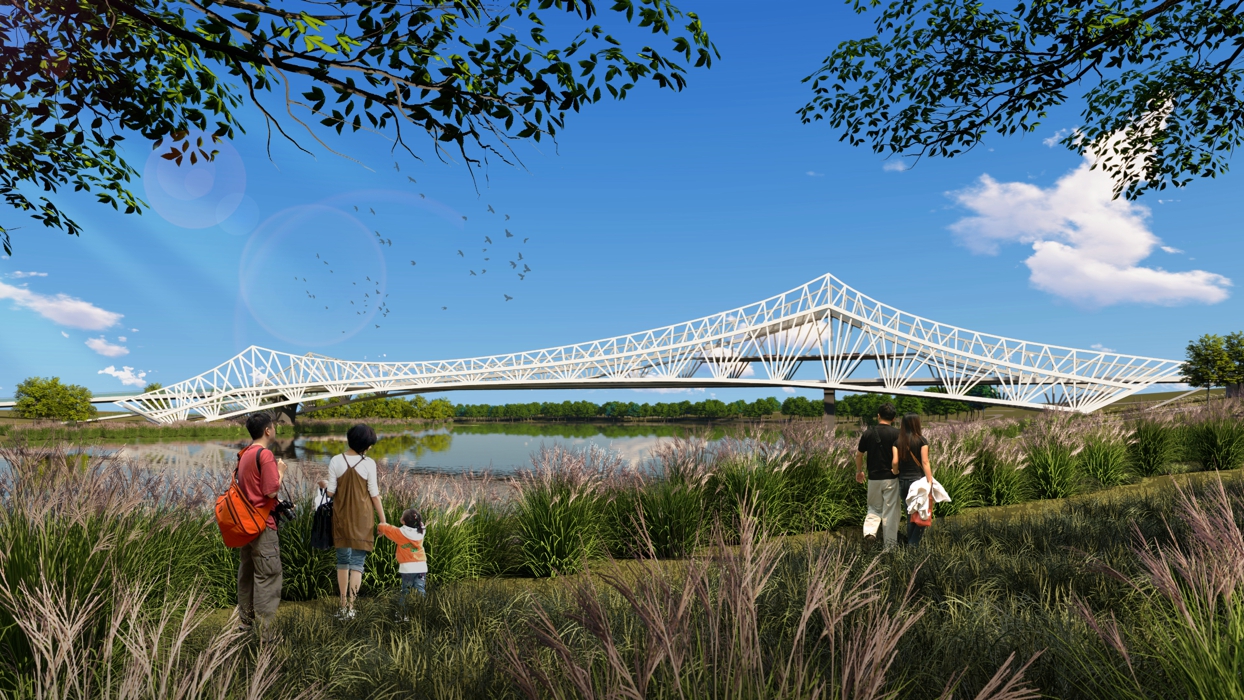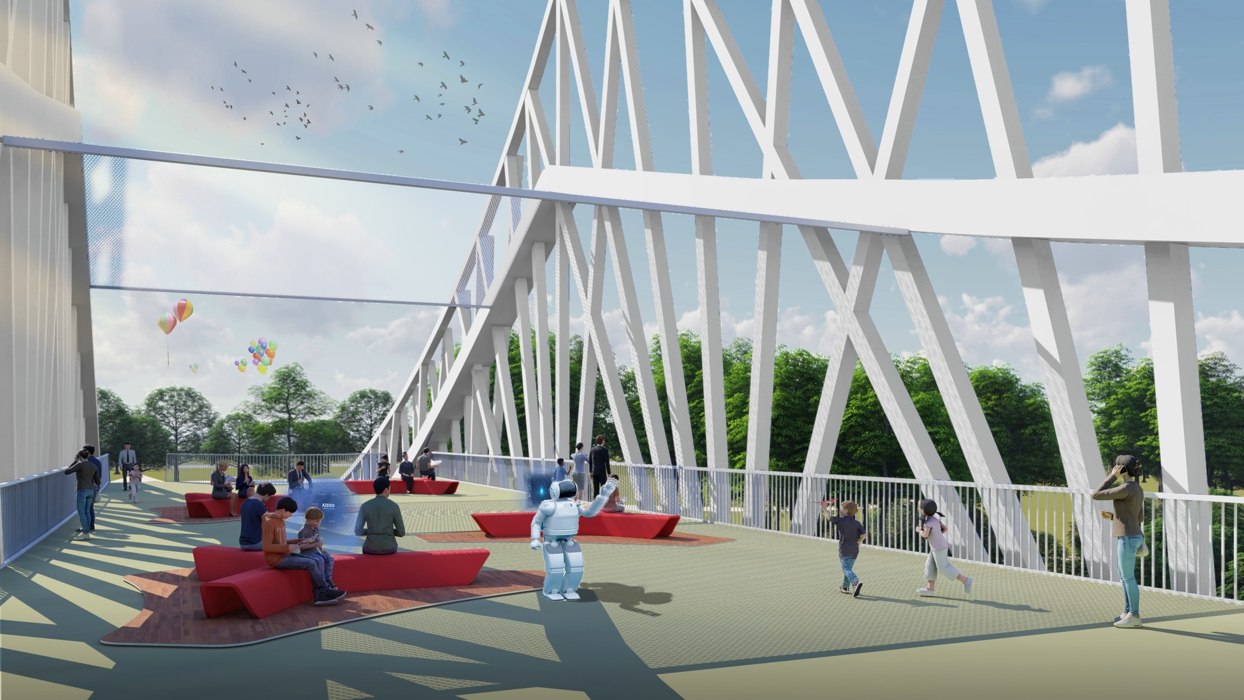Quzhou Smart Twin Bridges
Project Information
- Project Location:
- China Quzhou, Zhejiang
- Project Scale:
- 1184m
- Design Time:
- September 2021
Project Profile
The project is located on the southern side of the Smart New City in Kecheng District, Quzhou, between Smart Island and Smart Bay. It aims to establish a pedestrian and cycling connection between the north and south banks of Changshan Port, using a pair of landscape bridges to form a looped route. This resolves the current disconnection in non-motorized traffic and improves the green and barrier-free slow-traffic system of the Changshan Port Ecological Park. The east and west bridges are approximately 360 meters and 450 meters long, respectively.
The bridge crosses the waters of Changshan River within the area of Smart Island, at the junction of Smart Bay and Smart Island in Quzhou’s Future City. The landscape bridges serve pedestrians and non-motorized vehicles, and the project is categorized as a large-scale municipal initiative. The west bridge has a total length of 494 meters, with a maximum single span of 160 meters and a standard deck width of 14 meters. The east bridge is about 654 meters long, also with a 160-meter main span and a 14-meter standard deck width.
The overall goals of the project are: (1) To meet navigation clearance requirements: the bridge must maintain 7 meters of vertical clearance and 110 meters of horizontal clearance above the highest navigable water level; (2) To ensure flood discharge safety: both riverbanks have levee roads designed for a 50-year flood level, and all riverfront green spaces are part of the floodplain, so the bridge structure must obstruct less than 8% of the flood section; (3) To integrate landscape and viewing functions: the bridge must not only serve green mobility but also incorporate viewing platforms for pedestrians to pause and enjoy the scenery; (4) To achieve separation of pedestrian and bicycle traffic: a vertical separation is recommended to handle peak-time congestion effectively; (5) To express the image of a smart city: the bridge not only enhances connectivity but also acts as a symbolic spatial medium between the tech academy and research industry, offering a green and intelligent platform for exchange.
Project strategies include: (1) Minimizing piers while maintaining a single-span crossing of the river: to meet floodplain and navigation requirements, the bridge is designed with minimal structural elements, using a single-span scheme of approximately 160 meters. The piers are located in the greenbelts on both banks, ensuring that the structure blocks less than 8% of the floodplain; (2) Vertical separation of pedestrian and bicycle paths: both bridges have independent paths for pedestrians and cyclists, with pedestrian paths connecting to a second-level viewing platform, forming a layered circulation system; (3) A clean and integrated elevation design: inspired by traditional Chinese covered bridges, the bridge features shaded canopies over viewing platforms, and incorporates natural elements such as "bionic leaf veins", "flowing clouds", and "mountain rooflines" into structural systems like variable-section steel box girders and steel trusses, resulting in a coherent and elegant elevation; (4) Implementation of smart urban furniture: the viewing platforms are equipped with smart infrastructure including information systems and Wi-Fi.
The design concept draws inspiration from the rhythmic and layered rooflines of traditional Chinese architecture, reinterpreted through a modern design language. The result is a contemporary landscape bridge that honors traditional cultural elements while showcasing innovative expression.
